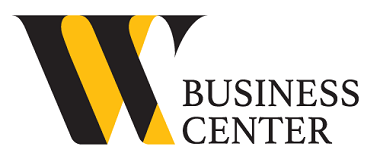Virtual employment models are changing, all thanks to technology and the social changes that come with it. Remote work keeps evolving as an employee opportunity, especially as we reach closer to 2025. Such changes also tend to provide new insights and patterns. This article attempts to provide a basic understanding of what the paradigm shift means for organizations and teams working remotely or in a distributed environment.
Understanding the Increase of Hybrid Models
Modern companies provide their employee base with a seamless blend of working from home and working from the office. Companies have already incorporated a significant amount of background work to build socially distant workplaces in the current pandemic. Employees now can alternate working at home or at the office depending on their schedules and task requirements. This business model improves collaboration where necessary and also provides some control over productivity, which tends to satisfy both employers and employees. In addition, businesses can use this arrangement to cut expenses over office space, which makes this approach one of the most popular ideas in workplace strategies.
Technology is the Center
With the proper adoption of digital technologies, remote work productivity is experiencing new shifts. New technology brings with it the need for employee monitoring for distributed teams that enable managers to understand productivity levels of their staff without breaching their trust. Unlike traditional tools, this solution guarantees transparency on workflow processes while protecting privacy, which is highly important as businesses expand their remote workforce. Communication and project management tools are necessary for efficient coordinated activities among teams, regardless of location. This is particularly true in the case of distributed teams.
Changing the Way We Measure Performance
A computer’s power-on time or a staff member’s time spent sitting at the desk no longer truly reflects how work is being done, and efficient, result-driven assessments are what dominate the working pattern today. Success is contingent upon tangible outcomes instead of a physical presence, and this re-evaluation of measures enables personnel to work in a manner that has meaningful impacts, resulting in a higher level of productivity. By having the appropriate Controlio software, organizations are able to effectively measure and keep track of progress without micromanaging each tiny detail.
Global Talent Accessibility
The rise of remote work means geographical barriers no longer matter. Companies can now hire skilled people from other countries and continents, allowing for new perspectives and skills to enrich the firm’s teams. This development aids in innovation and allows companies to access cheaper labor resources. Nevertheless, the management of time zones, cultural differences, and legal compliances requires significant attention and advanced systems. These challenges are often solved with software that improves communication and coordination on a global scale.
Sustainability in Focus
The commute caused by remote work adoption has evaporated, which helps in reducing carbon emissions. Along with this, employees also depend on sustainable energy sources, which help save these companies money, further amplifying the impact. Organizations that follow these strategies are influenced by the societal view towards the environment, and remote work becomes their key tool in the fight against climate change.
Improving Employee Happiness
Being able to work from anywhere boosts mental health and makes it easier to achieve a good work-life balance. Employees can now structure their days to accommodate personal needs, facilitating a reduction in stress and burnout. Nonetheless, feelings of isolation can still be troublesome, leading companies to spend more on virtual team-building activities as well as regular interactions. Overall, focusing on well-being provides motivated workers that increase retention and boost morale, which is very important in a competitive environment.
The Importance of AI Technology
AI technology is single-handedly transforming the operations of remote teams by streamlining processes and improving decision-making. From setting meeting appointments to sifting through data, AI takes care of all the work so individuals can focus on creative and strategic thinking. Its adoption will undoubtedly increase productivity since workers will have more time to focus on important tasks. As this technology develops, there will certainly be a myriad of changes to how people expect to function in a remote job.
Information Security Issues
With remote teams comes an increased risk of exposure to cyber threats. Securing sensitive data from a variety of locations is a complex process that requires stringent measures such as encryption and multi-factor authentication. In the modern setting, businesses are increasing their spending on information security and employee training to protect their operations because a single hack can cost them valuable time and money. To ensure collaborators can trust each other, strong defenses are a must.
Asynchronous Collaboration
Complementary to real-time collaboration is asynchronous interaction, where team members can contribute at their own pace and schedule. This type of interaction is helpful when schedules and time zones differ, adding more flexibility. This type of tool ensures that there is proper documentation and updates made to enable collaboration without attending a meeting on every occasion. Such measurable development has resulted in increased productivity, fitting aptly into the world of interdependence.
Preparing for the Future
Examining the development of remote work challenges us to believe that it is never static or simple, but transformational and full of opportunities. Any organization willing to adopt hybrid structures and care for its employees’ needs has chances of being competitive in the future of remote work. Everything is possible in remote work, especially if there is agility and readiness, which for most people, is the most important remote work feature. Consulting the above information enables organizations to confront the challenges of tomorrow and prepare resilient, innovative teams that are able to overcome whatever issues arise.
To sum this up, the revolution of remote work has not ended; in fact, it has only increased. With every new achievement, we discover better methods to communicate, innovate, and flourish. The changes taking place at the moment are not normal occurrences; they indicate profound elements of change that will transform the concept of work for many future generations immensely. Taking part in this effort means putting the relevant mindsets and tools that let us reduce effort and increase productivity in a borderless world to work.

